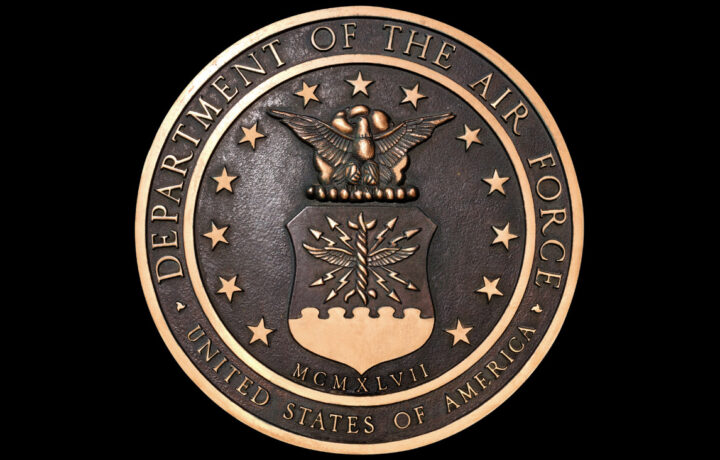The United States military’s Lockheed Martin F-35 Lightning II has been touted as one of the most advanced and capable aircraft in the world today. However, the fifth-generation stealth fighter has more than its fair share of detractors, who continue to note that it is on track to be one of the most expensive DoD programs to date.
By the time the F-35 is retired from service in the 2070s, it is expected that the program could cost more than $2 trillion. Even worse, the Project on Government Oversight (POGO) warned earlier this year that the Lightning II – which is produced in three variants – maintained only a 51% average monthly availability rate. The government watchdog further warned that just half of the 628 F-35s delivered to the U.S. military are ready to perform at any given time.
Looking to the Next Generation
Although the F-35 has years – even decades of service – to come, the U.S. Air Force has begun to look well past another of its first fifth-generation fighters, namely the Lockheed Martin F-22 Raptor. The Air Force is now focused on the Next Generation Air Dominance (NGAD) program, which calls for a system of systems that will include a manned fighter along with unmanned “loyal wingman” drones, along with greater networking capabilities between the various aircraft.
However, there have been recent warnings that the sixth-generation manned fighter could cost upwards of three times as much as the F-35, with a total price tag as high as $300 million per aircraft. That has led to concerns that the air service would have to reduce the number of aircraft in its fleet, which in turn means that losing any in accidents would be devastating, while critics have warned that combat losses would impact the Air Force’s ability to effectively fight future wars.
As a result, last month, Department of the Air Force Secretary Frank Kendall told Defense News that efforts are already underway to streamline the aircraft’s design, and that could include a “less complex” and potentially “smaller engine” to lower the costs of the future fighter.
“The family of systems concept of Next Generation Air Dominance is alive and well,” Kendall said in his interview. “I can tell you that we are looking at the NGAD platform design concept to see if it’s the right concept or not. … We’re looking at whether we can do something that’s less expensive and do some trade-offs there.”
More Than Another Fighter
As noted, the NGAD program calls for more than just a fighter. It would be built around systems that could include advanced sensors, weapons, and networking technology that could allow each generation to connect with satellites and other aircraft.
The fighters could also be supported by Collaborative Combat Aircraft (CCA), an unmanned aerial system (UAS) that would serve alongside the manned or optionally manned aircraft. As advanced loyal wingmen these would be capable of supporting and protecting the human pilots – providing reconnaissance, acting as decoys, and notably sacrificing themselves to accomplish the mission.
Aviation experts have further suggested the future fighter fleet of the Air Force could be made up of hundreds of manned fighters supported by thousands or more CCAs. What is important to note is that the drones would be far less capable than the sixth-generation fighters, but far less costly.
At last month’s Air & Space Forces Association event on June 13, Air Force Chief of Staff Gen. David Allvin also reaffirmed that the CCA wasn’t something that would see an aircraft enter service in the 2030s and remain flying for decades to come. Instead, these low-cost drones would be designed for the near future, and upgraded with new models as the need arrives.
Thus the CCA would be a more disposable than long-term solution.
“Built to last’ is a tremendous 20th-century bumper sticker, but the assumption was: whatever you had was relevant as long as it lasted,” Allvin explained. “I’m not sure that’s relevant anymore. So that’s why we aren’t building a sustainment structure. Ten years after this, I’m hoping the technology will make it so that CCA won’t be as relevant, but it might be adaptable, and that’s what we’re building into modularity and adaptability.”
How to Pay For the NGAD?
As reported last year, the United States Air Force has sought to retire more than 300 legacy aircraft from its fleet as part of its $185.1 billion Fiscal Year 2024 (FY24) budget. While the service was forced to keep some of the older planes flying, it again called for numerous aircraft to be retired so that money could be directed towards the NGAD and other programs.
Among the aircraft that could be on the chopping block are the older Block 20 variants of the F-22 Raptor. Air Force officials have warned that the Block 20 are not combat-capable, and instead are used only in training. Moreover, those Raptors have not been updated to the same capabilities as the more advanced Block 30/35 aircraft now in service.
Learning From Past Mistakes
It is also worth noting that the F-22 program had also been one of the Air Force’s most expensive projects – but as the Cold War had been over as the Raptors entered service in the late 1990s, the originally planned buy of 750 of the fifth-generation air superiority fighters as scaled down to 381 and then further cut to just 195 aircraft. That included eight test prototypes and 187 production fighters.
That put the cost of each aircraft at $350 million, and unless the Air Force can get the price under control with the NGAD, the air service could again see the price tag for its front-line fighter soar.




